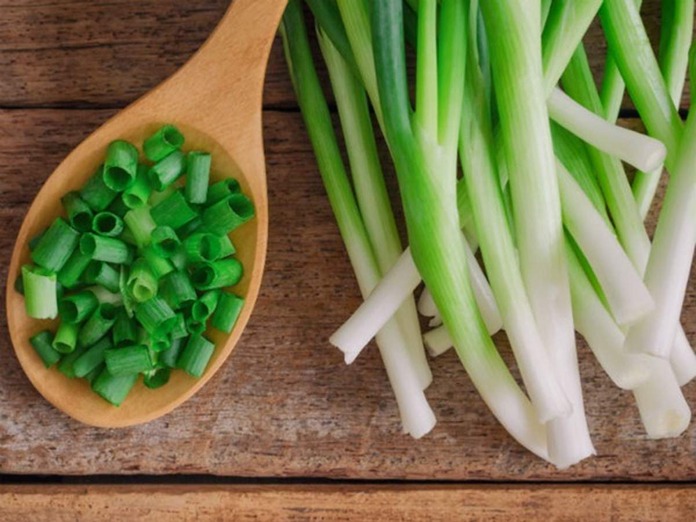How to Grow Onions: Precisely Explain
The cultivation and selective breeding of onions span an extensive period of several millennia, resulting in a remarkable array of onion plants existing today. This diversity encompasses a wide range of characteristics, including varying flavors that can be either sweet or pungent, as well as different types such as those with bulbing or bunching growth habits. Additionally, different regions have developed their own distinct onion varieties, which possess unique flavors and serve specific purposes.
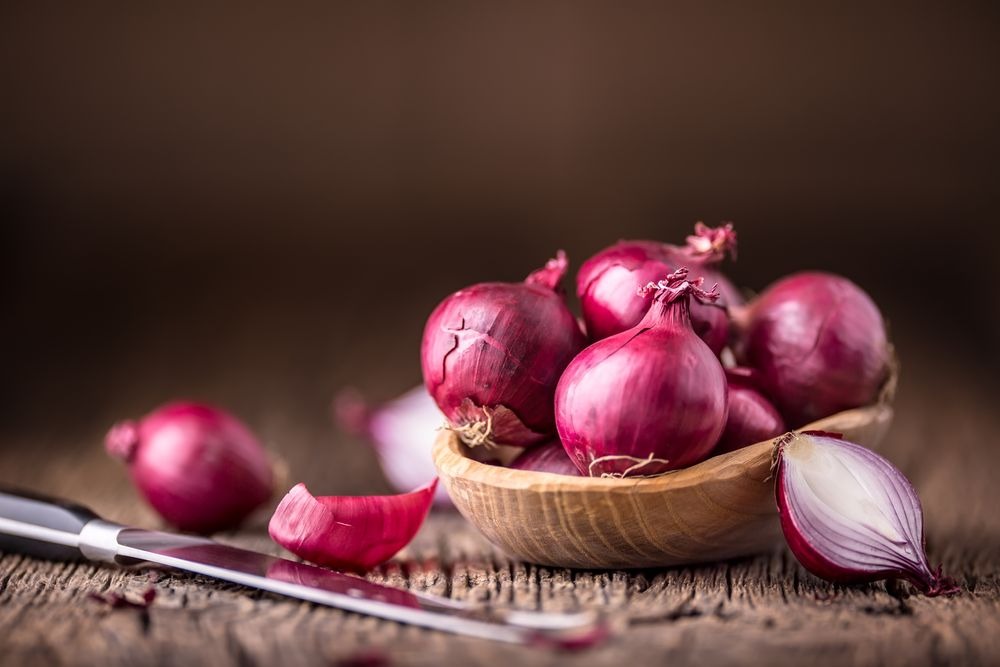
Growing onions is a relatively straightforward process, as they are well-suited to cultivation. They can be propagated through different methods, including sowing seeds, using transplants, or employing small bulbs referred to as “sets.” As the onion plants progress through their growth cycle, they undergo physiological changes in response to alterations in temperature and the length of daylight. This development ultimately leads to the formation of bulbs, which are characteristic of mature onion plants.
The specific varieties of onions that thrive in a particular region and the optimal timing and techniques for their cultivation are influenced by local climate conditions and latitude. These factors play a crucial role in determining which onion varieties can successfully produce bulbs in a given area, as well as guiding the appropriate timing and methods for planting onion to ensure their successful growth.
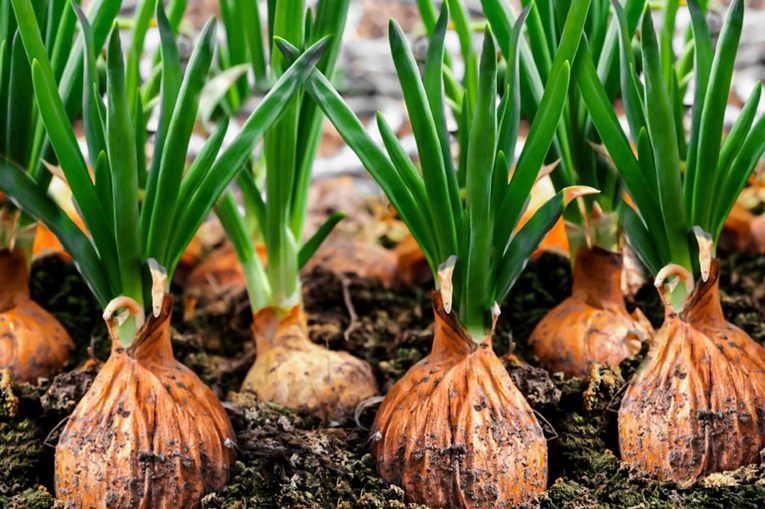
Onions Care
Onions are a type of crop that thrives in cool seasons and can be cultivated across a wide range of locations encompassing the United States and southern parts of Canada, extending as far north as USDA hardiness zone 3. The specific timing for planting onions depends on the particular region, with options available for both fall and spring planting.
These resilient plants exhibit a biennial life cycle. During the first year of growth, onion plants primarily focus on producing foliage. In the subsequent second year, they progress to develop flowers and subsequently generate seeds. However, when growing onions in a garden setting, they are typically treated as an annual crop. This means that onion bulbs are harvested before they have the chance to flower and set seed.
The bulb of an onion serves as a storage organ, playing a vital role in the plant’s survival over winter and its overall energy storage. By accumulating and storing energy within the bulb, the onion plant ensures its ability to endure adverse conditions and resume growth during the following growing season.
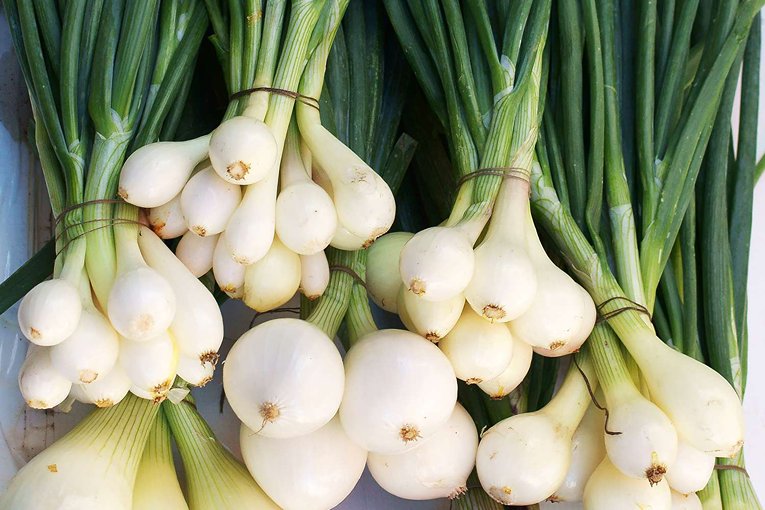
Light
To achieve optimal yields, onion necessitates full sun exposure, receiving a minimum of 6 hours of sunlight daily.
Soil
Onion thrives in consistently moist and well-drained soil, with an ideal pH level ranging between 6.0 and 7.0. Loamy soils enriched with organic matter offer the best growing conditions for onions, although they can tolerate sandy and clay soils as well. Sandy soils require additional fertilization and irrigation to maintain consistent moisture levels, while clay soils tend to yield spicier onions. The addition of well-composted organic matter is recommended to enhance the soil’s texture and overall quality.
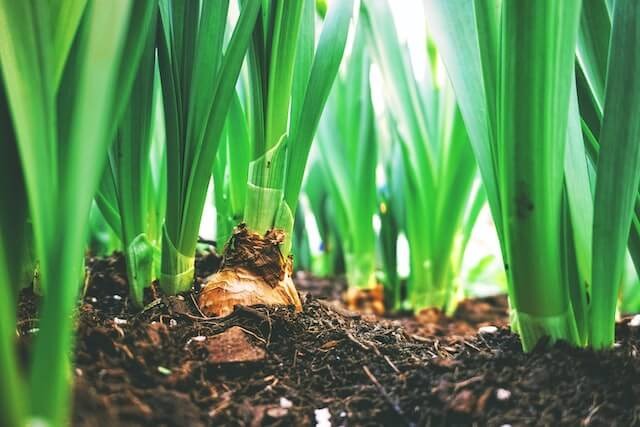
Temperature and Humidity
Onion belongs to the cool-season crop category and exhibits a reasonable tolerance to moderate freezes. However, when faced with particularly cold spells, it is advisable to provide protective coverings for the onion beds if temperatures are expected to drop to 20°F or below. While onions can endure cold conditions, seedlings may experience stunted growth if both soil and air temperatures are excessively cold. It is crucial to exercise caution and refrain from setting out plants too early, ensuring the conditions are favorable for their healthy development.
Fertilizer
Onion has a high demand for nutrients and is considered heavy feeders, particularly in terms of nitrogen. However, it is important to strike a balance, as excessive fertilizer application can lead to complications. Before planting, it is recommended to incorporate a balanced fertilizer with a ratio of 10-10-10 into the soil along the intended planting line.
Around two to three weeks after planting, a process known as side dressing is employed. This involves applying a nitrogen-based fertilizer alongside the row of onions, maintaining a distance of approximately six inches away from the plants. The choice of fertilizer depends on the soil’s pH level. For alkaline soils, a fertilizer containing ammonium sulfate with a ratio of 21-0-0 is suitable, while acidic soils benefit from calcium nitrate with a ratio of 15.5-0-0. The application rate is typically 1 cup per 20 feet of row.
To promote the desired growth and development, this side dressing should be repeated every 2 to 3 weeks until the onion bulbs begin to form. It is important to water the onions following each fertilizer application, ensuring the nutrients are adequately absorbed by the plants.
Water
With a shallow root system, onion plants require regular and even moisture for their growth and development. Ideally, they need around one inch of rainfall or irrigation per week. The preferred irrigation methods include drip irrigation or furrowing. Young and newly planted onion plants, especially those in sandy soils, may require more frequent watering, exceeding once per week. It is crucial to cease watering when the tops of the onion plants begin to droop or fall over, as this serves as an indication that the bulbs are ready for harvest.
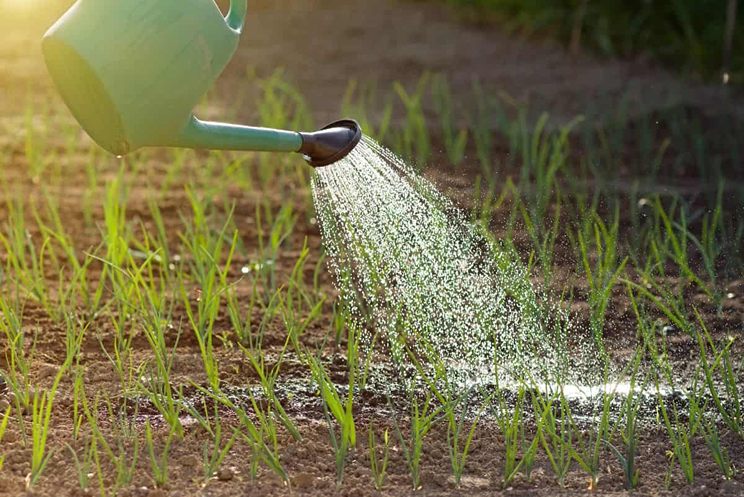
Types of Onions
The process of bulb initiation in onion is stimulated by changes in the duration of daylight. Onions are categorized into different types based on their bulb formation relative to the amount of daylight they receive. It is crucial to carefully choose an onion variety that corresponds to the specific region. Within each day-length group, there is a wide selection of onions available, including those with red, yellow, and white skins.
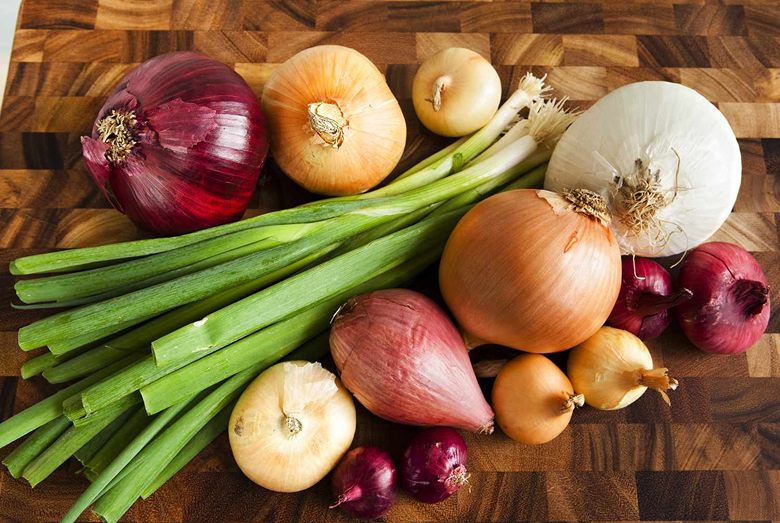
Short Day Onion
Short day onions commence the development of bulbs when the length of daylight reaches 10-12 hours. These particular varieties are most suitable for locations within latitudes ranging from 25 to 35 degrees. They thrive in southern gardens, ensuring a successful harvest before the onset of intense summer heat. However, in northern regions, they tend to initiate bulb formation too early to produce sizable bulbs. Short day onion typically possess a mild and sweet flavor, making them ideal for fresh consumption.
Intermediate Day (or Day Neutral) Onion
The category of intermediate day onions encompasses varieties that begin the bulbing process when day lengths reach 12-14 hours. These onions thrive in latitudes ranging from 32 to 42 degrees. The range of these varieties overlaps with both short day and long day onion. Intermediate day onions perform well in various regions across the United States, excluding the far southern areas. Notably, onion belonging to this group is often characterized by their exceptionally sweet taste.
Long Day Onion
Long day onions exhibit bulb formation only when the length of daylight reaches 14-16 hours. They are particularly well-suited for cultivation in northern latitudes, typically ranging from 37 to 47 degrees. This group of onions is known for its excellent storage qualities, making them ideal for long-term preservation. Many long day onion varieties are characterized by a strong and pungent flavor, adding distinctive taste profiles to culinary preparations.
Additional Onion Types
Over the centuries, several unique groups of onions have been selectively bred, resulting in characteristics that differ significantly from regular bulbing onion. The Aggregatum group includes shallots and potato onions (Allium cepa var. aggregatum). Rather than forming one large bulb, these onions produce clusters of smaller bulbs. Most shallot varieties are classified as “long day” onion due to their specific growth requirements.
Different species of Allium encompass other onion variations. Chives, walking onions, leeks, and Welsh onions belong to these diverse species, each possessing distinct qualities and culinary uses.
Another variation in onion types arises from their cultivation methods. Pearl onions, for instance, are short-day onion varieties that are grown under long-day summer conditions in northern latitudes. They are typically planted at high densities and develop bulbs shortly after emergence, resulting in small, specialty onions.
Green onions, also known as scallions, are simply onions harvested at an immature stage. They are commonly used for their fresh and mild flavor. Harvesting yellow, white, or red onion for “green use” serves the dual purpose of thinning onion rows and creating adequate space for bulb development in the remaining plants. This approach ensures optimal growth of the remaining onions.
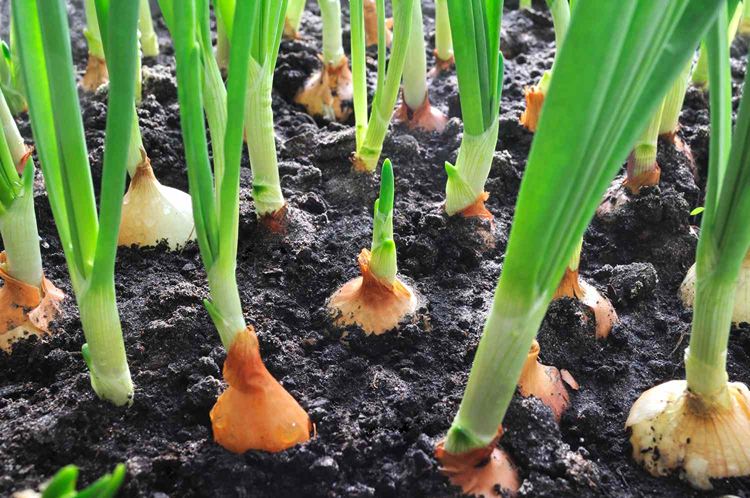
Planting Onion Bulbs
Onion can be cultivated using different methods, including planting from seed, transplants, or small immature bulbs known as “sets.” The choice of planting method and timing depends on the specific starting material and the local climate. In northern regions, onions are typically started in spring for a late summer or fall harvest, while southern gardeners have the option to start onions either in the fall or late winter for an early summer harvest.
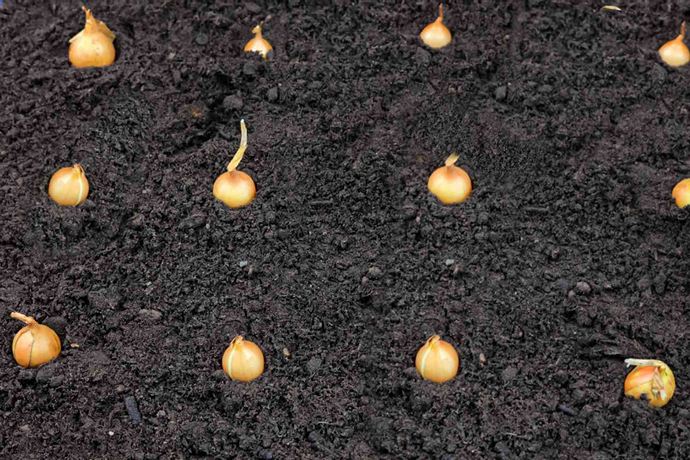
Growing Onions from Seed
Growing onions from seed is the most cost-effective approach and offers a wide range of variety options. However, it is also the most challenging method, often resulting in uneven germination. To ensure a consistent crop, seeds can be started indoors 10-12 weeks prior to the anticipated transplanting date. Alternatively, in northern gardens, seeds can be directly sown into the garden in early spring as soon as the soil is workable. In southern gardens, direct sowing can take place in the fall or late winter.
Growing Onions from Sets
Sets are small bulbs that are immature and started from seeds in the previous season. Growing onions from sets is a relatively easy method, but there is a risk of plants bolting (prematurely producing flowers). Sets are readily available at garden and agricultural centers or can be ordered from seed catalogs. However, they tend to be more expensive than seeds, and the variety selection is limited. When purchasing sets, it is advisable to choose ones that are no larger than an inch in diameter.
Growing Onions from Transplants
Onion transplants are young onion seedlings obtained from seed companies. They are typically sold in small bundles, with each plant resembling the thickness of a pencil. Transplants offer more reliable results compared to sets and are less prone to bolting. Moreover, they usually come in a wider range of cultivars. Both transplants and sets can be planted in the garden when the soil temperatures reach 50°F, which is generally about 4-6 weeks before the average last frost in spring.
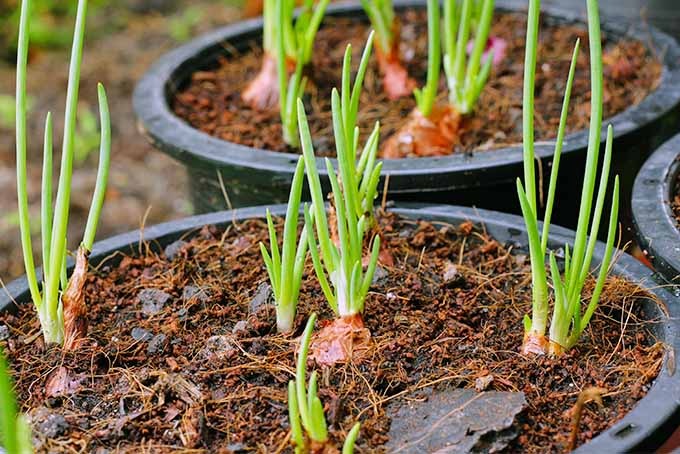
Planting Steps
To ensure successful onion growth, follow these planting steps:
- Prepare the planting bed by incorporating the recommended fertilizer into the soil, as mentioned earlier. If required, amend the soil with well-composted organic matter to enhance its quality. In heavy soils, creating mounded rows during planting can help improve drainage.
- Plant transplants or onion sets at a depth of 1 to 1½ inches in rows spaced 12 to 18 inches apart. If using transplants, space them 4 inches apart within each row. In the case of direct seed planting, sow the seeds at a depth of ½ to ¾ inches, with approximately 8 to 12 seeds per foot of row. Once the seedlings emerge, thin them to maintain a spacing of 4 inches between plants. The onion that is thinned out can be utilized as scallions, also known as green onion.
- Ensure thorough watering of the newly planted onion. Maintain a consistent irrigation schedule and regularly remove any emerging spring weeds. It is important to weed gently to avoid damaging the young onion plants.

Harvesting Onions
When onions are ready for harvest, you will notice the tops of the plants starting to bend and fall over. It is best to harvest the onion when approximately half to three-quarters of the tops have fallen over. To do this, use a spading fork to gently dig beneath the onions and lift them from the soil. Once harvested, the onions need to undergo a curing process before storage. Place them in a warm and well-ventilated area for a period of two to four weeks, or until the outer layers of the bulbs become dry. During this time, the neck of the bulb will also tighten. After curing, you can trim off the tops of the onions. To ensure proper storage, keep the onions in a cool and dry place, taking care not to expose them to freezing temperatures.

Common Pests & Plant Diseases
While onion is generally easy to grow, they can occasionally be affected by pests. In home garden settings, diseases are typically not a major concern. However, implementing good cultural practices can help prevent plant diseases. One effective measure is practicing crop rotation by planting onions in different areas of the garden each year. Additionally, opting for well-drained soil or using raised beds can be beneficial.
Thrips and onion maggots are the two most common insect pests that can affect onions. Thrips feed on the foliage, causing damage that result in silvery-colored leaves with visible specks. Thrips overwinter in weedy areas and on onion bulbs that have not been removed from the garden. Implementing good sanitation practices, such as keeping the planting area free of debris, can help manage this pest.
Onion maggots, on the other hand, feed on the roots and bulbs of onions, which can lead to bulb rot during storage. Similar to thrips, implementing crop rotation and maintaining good sanitation can assist in managing onion maggots. These pests are attracted to undecomposed organic matter, such as fresh manure and rotting foliage. It is recommended to avoid amending the soil with fresh manure and only use well-composted organic matter. By following these preventive measures, you can minimize the impact of pests and diseases on your onion crop.
Common Problems
One of the most prevalent issues encountered in onion production is bolting, which refers to the premature flowering of onions. When an onion plant bolts, the energy that was initially allocated for bulb formation is redirected towards reproduction, causing the onion bulb to stop developing. In such cases, it is recommended to harvest the onions and utilize them as green onions or scallions.
Bolting can occur due to various factors, primarily influenced by temperature fluctuations. For instance, a period of favorable growing weather followed by a sudden cold spell can deceive the plants into initiating flowering. Similarly, a cool spring followed by high temperatures can also trigger bolting. To mitigate the risk of bolting, it is crucial to plant onions at the appropriate time according to your specific area. If using onion transplants, ensure they are no larger than a pencil, while onion sets should be an inch or less in diameter.
Despite these challenges, growing onion can be a rewarding endeavor. They require minimal space and can be accommodated in various garden settings, including flower beds. When selecting onion varieties to grow, seeking advice from local growers at farmer’s markets is highly recommended. They possess valuable knowledge regarding the best onion varieties suited for your region, enabling you to make informed choices for a successful onion crop.
